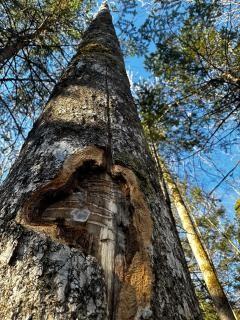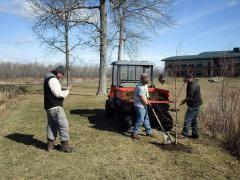With funding from the GLRI through the USDA Forest Service, the Saint Regis Mohawk Tribe removed ash trees plagued by emerald ash borer (EAB) and replaced them with a diverse selection of trees to restore a forest in upstate New York.
EAB is one of the most destructive ash tree-killing pests in North America. Native to Asia, the insect was first detected on this continent in southeastern Michigan over two decades ago. Since then, its population has killed nearly all North American ash trees in its path, which now spans both the East and West coasts. The tribe first detected EAB on its territory in Akwesasne in 2016. Emerald Ash Borer galleries form under the bark of an ash tree. Once hatched, larvae eat their way through the tree’s vascular tissues in a meandering pattern that ultimately affects the tree’s ability to move nutrients and water from the roots to the crown, effectively killing the tree.
Ash is very important to traditional basketry, and ash trees need to be a certain size before being used in basket weaving. “If the ash is all gone there is no replacement for this resource. When you lose the resources, you lose the cultural practice that goes with it,” said Jessica Raspitha, forest restoration project manager for the tribe.
The tribe took down roughly 360 ash trees after the detection and later planted another 360 trees and shrubs from 26 species in their place. Just under half of those trees came from the local tribal tree nursery.



